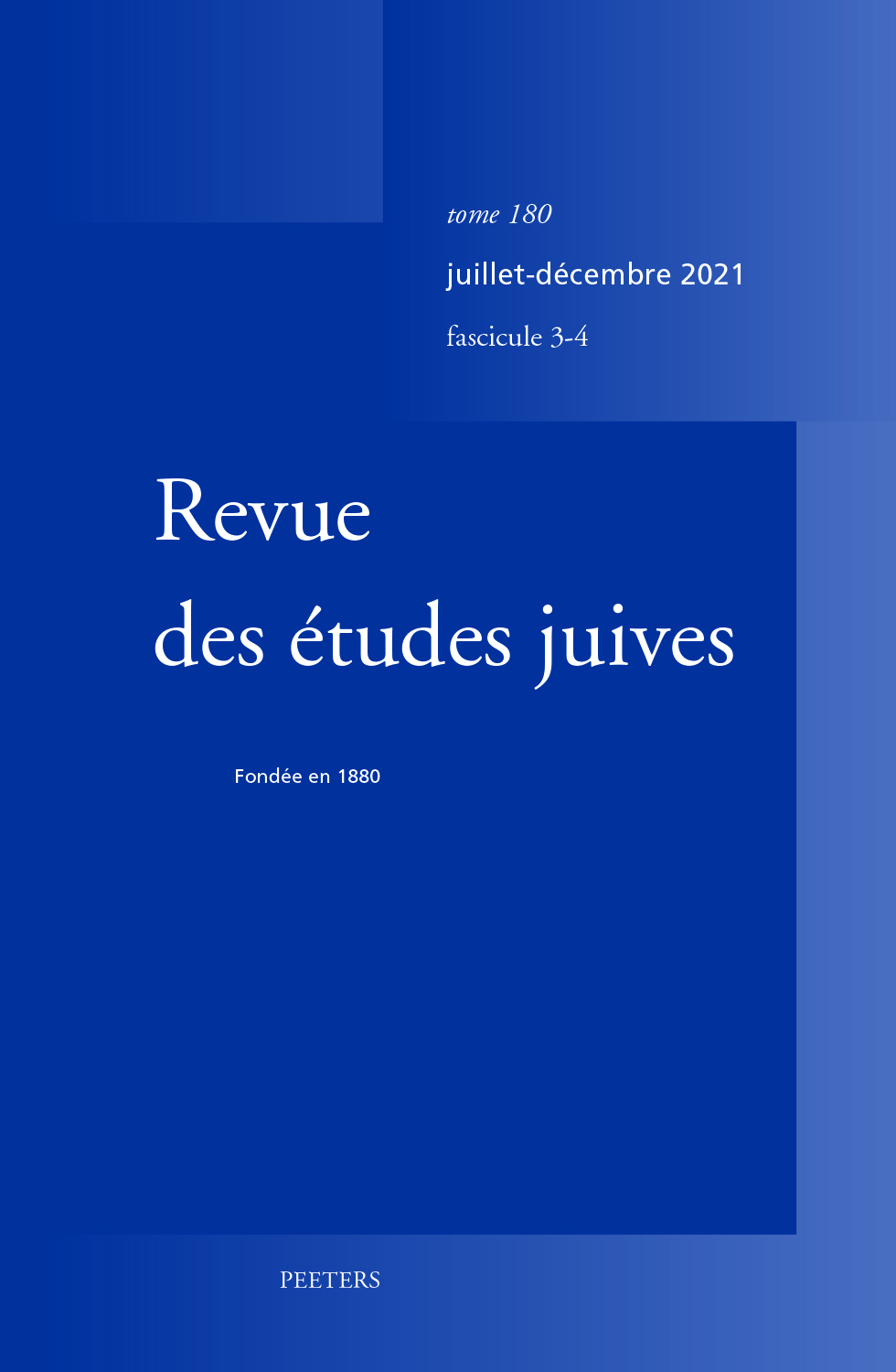next article in this issue  |

Preview first page |
Document Details : Title: The Hasmonean State and Rome Subtitle: A New Appraisal Author(s): ROCCA, Samuele Journal: Revue des Études Juives Volume: 173 Issue: 3-4 Date: juillet-décembre 2014 Pages: 263-295 DOI: 10.2143/REJ.173.3.3062102 Abstract : The main purpose of this essay is to analyze the evolution of the relationship between the Hasmonean state and the Roman Republic. The first part of the essay shall discuss the beginning of the relationship between the two countries, from the last years of Judah the Maccabee to the early years of John Hyrcanus I’s rule. In this section I shall argue for a quite positive perception of the Roman Republic in Hasmonean Judaea. The second part of the essay shall discuss the evolution of this relationship from the last years of John Hyrcanus I’s rule to the reign of Queen Salome Alexandra. In this part, I shall argue that the Hasmonean state did not shift its foreign policy, as argued by Rappaport and Pucci Ben Ze’ev, but that the friendship between the two countries continued. However, notwithstanding the existing treaty between Hasmonean Judaea and the Roman Republic, Pesher Habakkuk depicts the 'Kittim' as cruel and greedy, mirroring a general view of Roman imperialism that Latin authors attributed to the enemies of Rome. In the third and final part of the essay, I shall discuss the last years of the Hasmonean state in light of Pompey’s conquest. By now, quite understandably, after Pompey’s conquest, the perception of Rome, mainly filtered through the figure of Pompey, was significantly altered. The Psalms of Solomon, as well as Pesher Naḥum in the Dead Sea Scrolls, depict the Gentiles or the 'Kittim' as the Divine instrument to punish the Hasmonean rulers. Thus, at this juncture in time, the Romans are seen in a negative light. L’objectif principal de la présente étude est d’analyser l’évolution de la relation entre l’État hasmonéen et la République romaine. Dans la première partie de l’article, qui discute le début de la relation entre les deux pays (des dernières années de Judas Maccabée aux premières années du règne de Jean Hyrcan Ier), nous défendons l’idée d’une perception très positive de la République romaine dans la Judée hasmonéenne. Dans la deuxième partie, qui présente l’évolution de cette relation des dernières années du règne de Jean Hyrcan Ier au règne de la reine Salomé Alexandra, nous soutenons que l’État des Hasmonéens n’avait pas modifié sa politique étrangère, comme l’ont soutenu Rappaport et Pucci Ben Ze’ev, mais que l’amitié entre les deux pays a continué. Toutefois, malgré le traité existant entre la Judée hasmonéenne et la République romaine, le Pesher d’Habacuc décrit les «Kittim» comme cruels et avides, conformément à la perception répandue de l’impérialisme romain que les auteurs latins attribuaient aux ennemis de Rome. Dans la troisième et dernière partie de l’essai, les dernières années de l’État des Hasmonéens sont discutées à la lumière de la conquête de Pompée. On comprend que, après la conquête de Pompée, la perception de Rome, qui passe principalement par la figure de Pompée, a été modifiée de façon significative. Les psaumes de Salomon ainsi que le Pesher de Naḥum dans les manuscrits de la mer Morte représentent les Gentils ou les «Kittim» comme l’instrument divin de la punition frappant les dirigeants hasmonéens. À ce stade de l’histoire, les Romains sont donc perçus de façon négative. |
|


